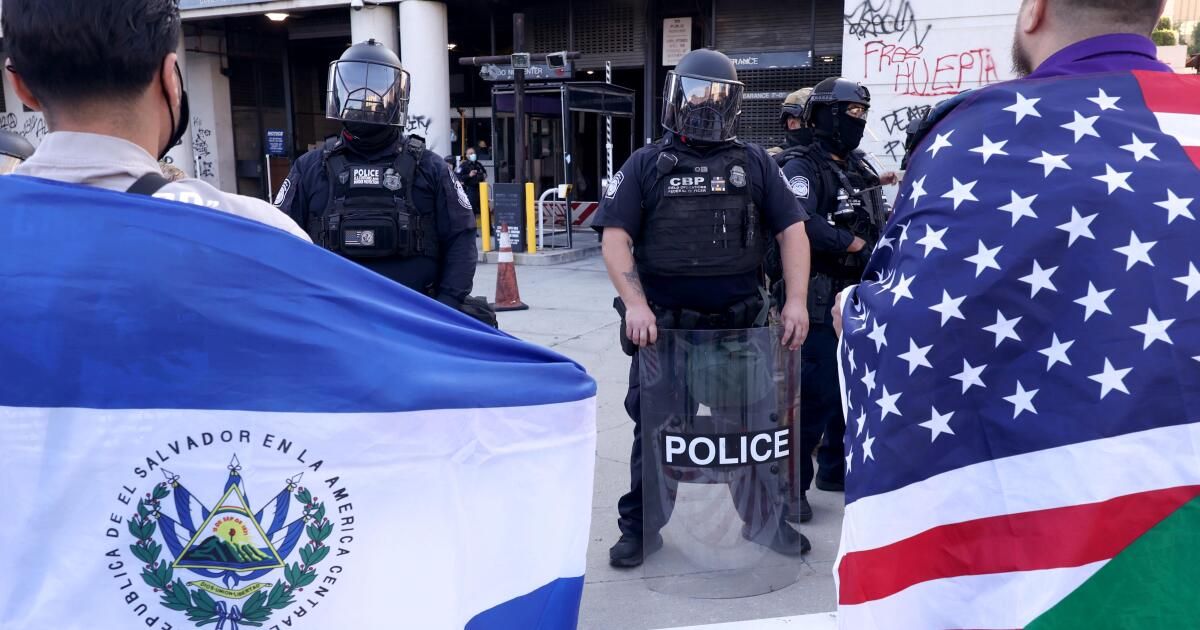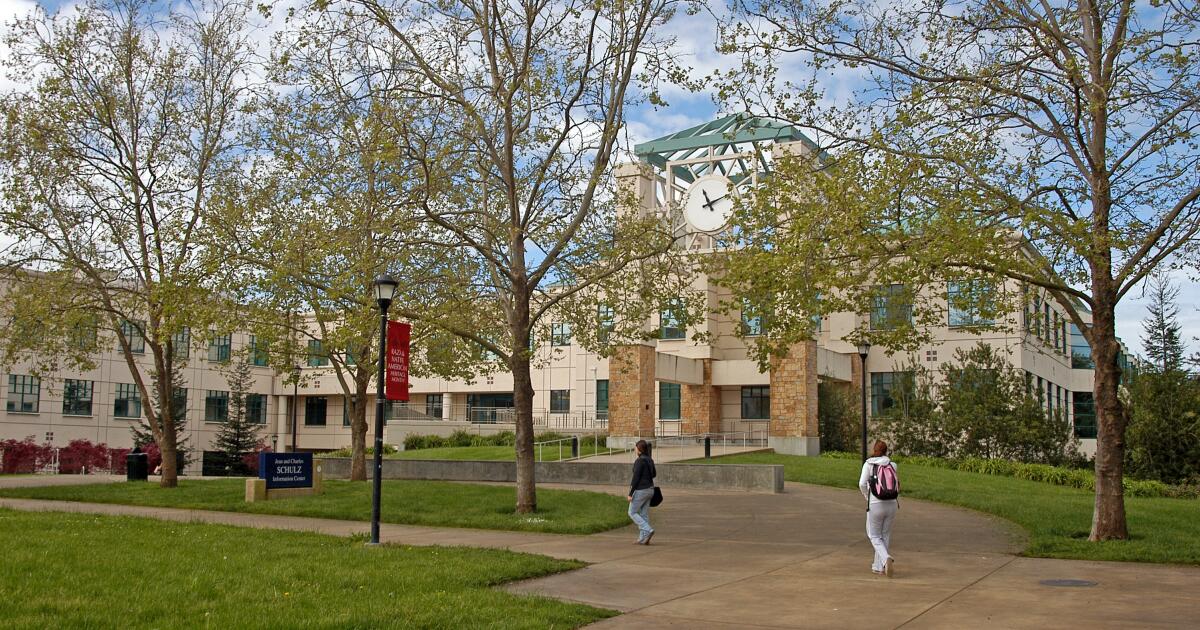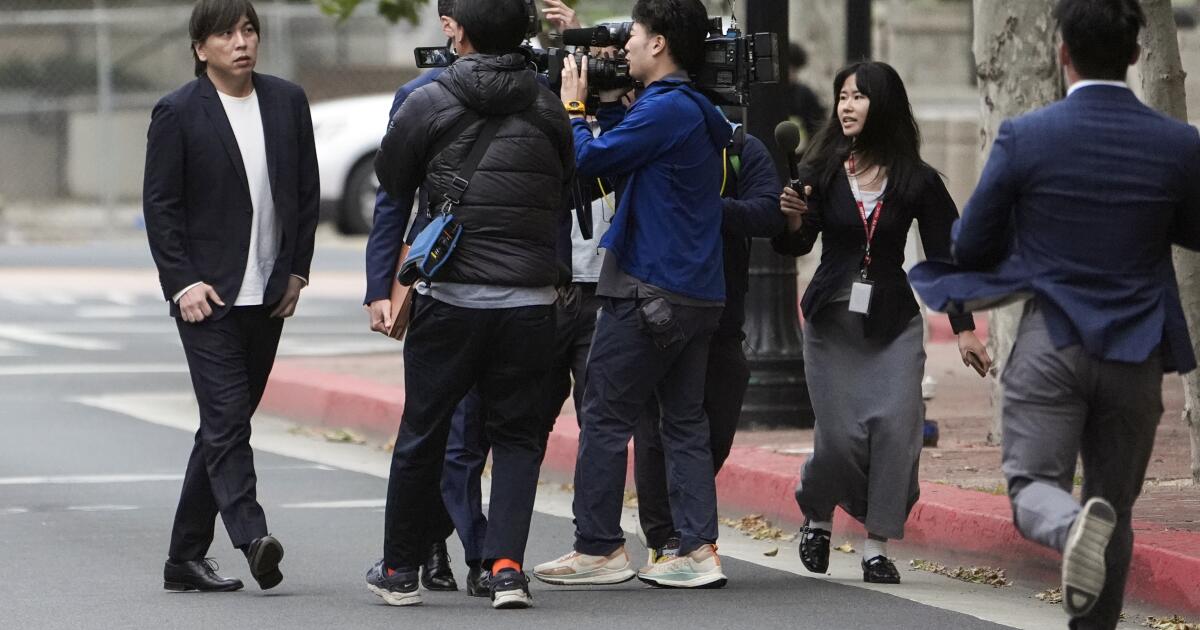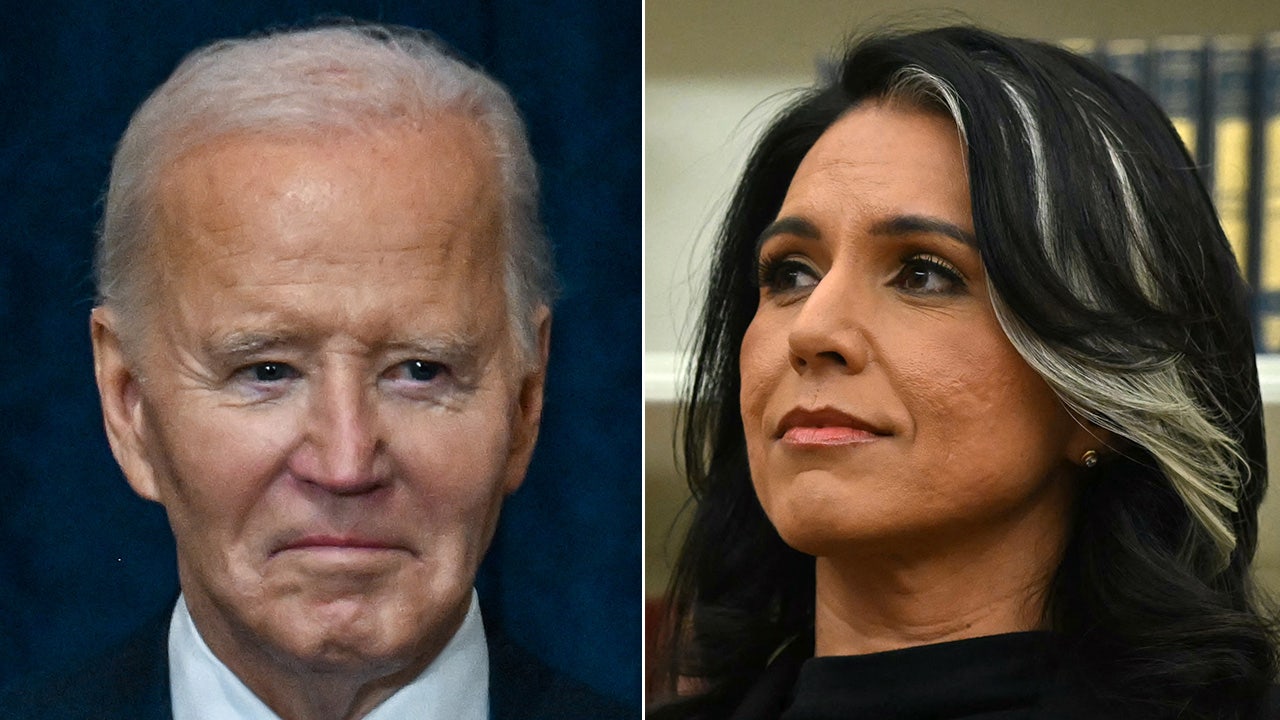The vendors sold a variety of colorful national flags in the center of Los Angeles on Wednesday, but Axel Martínez decided on one with ancient glory in half and the Mexican flag in the other.
The 26 -year -old was born in the United States, raised in Mexico City and returned to the United States due to the opportunity, he said. On Wednesday, he was among hundreds of other protesters outside the Metropolitan Detention Center in the center of Los Angeles who faced the National Guard troops on Alameda Street. Around a dozen other flags, Mexico, the United States, California, Guatemala and El Salvador, fluttered on the crowd.
“Everyone has a story here,” Martínez said. “I am proud to be Mexican and to be born here.”
For eight days, protesters have arrived in the center of Los Angeles to protest against immigration arrests in the city and the presence of the National Guard. The images of flags, mainly from Mexico, have been extended in news reports and social networks, sometimes attracting the anger of critics. Even supporters of the demonstrations have criticized the exhibition of foreign flags, arguing that they send the wrong message. The members of the Trump administration have published images of the Ensign in the publications on social networks, and called the protests an “invasion” or “insurrection.”
“Look at all foreign flags,” Stephen Miller, deputy director of President Trump published Sunday on the social platform X, calling Los Angeles “Occupied territory.”
Vice President JD Vance referred to protesters as “insurrectionists who carry foreign flags” in X.
But when several protesters were asked why they stir a foreign flag instead of the white and red blue of the United States, many provided a similar response.
“Why not?” Martinez said.
Near 1st and Alameda streets on Monday, Christopher Kim, 46, covered a southern Korean flag on his back like a layer.
It was the first time he decided to participate in the protests, and did not think twice when he grabbed the Taegeukgi.
“I was seeing all these flags flying around, but there are not only Korean, Mexican and Guatemalan people here,” he said. “There are people from all over the world, who live here in Los Angeles, and we have a community here.”
For him, bringing the flag was a tribute to his immigrant parents, who came to the United States and worked so that their children had better lives, he said.
“They are not here, but this represents my roots,” he said. “This flag is my home, it is my family.”
When asked if flying the flag of another country during a protest should be considered offensive or counterproductive, Kim mocked and shook his head.
“This country is made of immigrants,” he said. “How could this be offensive to someone?”
At the beginning of the week, a 21 -year -old woman who identified only when Jade bought a Mexican flag and joined a noisy crowd of protesters on Alameda Street.
“This is our people,” he told a journalist on Monday.
Both she and her parents were born in the United States, but her grandparents emigrated from Mexico. Taking the red, white and green flag was a wink to them and their sacrifices, he said.
“I come from a family of immigrants, and I'm here for them,” he said. “This is my country. This is my family.”
Below on the street, Ariel Miller moved away from the police line, hoping to prevent officers from triggering rubber bullets trying to disperse the crowd.
He looked towards the police line and stirred the blue and white flag of El Salvador. She is not Latin American, she said, but she was shaking the flag for a nearby friend who could not go to protests.
“I got this for her because she wanted her to know that, she couldn't be here, and I love her, and I'm here for her,” he said. “She has a family for which this is a really scary moment.”
In the sea of people marching and singing, the emblems of Mexico, Guatemala and El Salvador and other countries were markers of the composition of the community, he said. The flags are as distinctive stamps that took them to the same place to protest the treatment of new immigrants and the presence of immigration and application of customs in Los Angeles.
The flags “let's say you can't erase me, and I care,” he said. “You can take into account that you are and where you come from.”
Miller was not the only protester this week to bring a flag for another person.
Najee Gow, which is black and grew in Minnesota, arrived at the center on Wednesday with a Mexican flag on the back and led the crowd in songs with a megaphone outside the Metropolitan Detention Center.
His fiancee is from El Salvador, he explained, but the men who sold flags had run out of blue and white flags. He opted for the red, white and green tricolor family.
“It has affected me personally,” he said about the recent immigration raids. Like other immigrants, he said, his fiancee is afraid.
He has heard critics who say that foreign flags should not be carried in protests, but shrugs.
“That is like saying: 'Do not greet your inheritance, your story,'” he said.
In protests where protesters are trying to emphasize the important contributions of immigrants and diversity, the variety of national banners helps underline that message, he said. And that includes stars and stripes.
“It's beautiful and, look, most of the [U.S.] The flags are the other way around, “he said, looking at the crowd.” It should be each flag. “
In front of the Metropolitan Detention Center, where protesters have gathered for several days near a line of National Guard troops, a flag seller sold a variety for $ 10 per piece.
On Wednesday, he said he ran out of Guatemala flags and El Salvador quickly. Before going home, he will probably deliver the rest of the free flags to the protesters, he said. It was his third day in the protests, and said he would only bring a new lot the next day.
He refused to give his name, but said he was selling flags not only to earn additional dollars for his family, but to support protesters.
When a protester in a facial mask hit his pants pockets and pointed out that he did not have cash for the flag, the seller handed him a flag of Mexico anyway.
“I have a family that was also deported,” he said. “They picked them up when all this began.”
Despite the images shown by critics, there have also been US flags during protests.
Javiera Burton, a 25 -year -old from Chile, took an American flag on Wednesday.
“We are living in the USA., And this is the flag,” he said, but added that he had no qualms that foreign flags were flown in the protest. “I think people should do what they want to do.”
At a time during Wednesday's protest, he said, a supporter of President Trump's immigration policies approached her and assumed that, because an American flag was flying, he also supported the repression of immigration that has occurred in recent days.
Then, he said, he separated the flag of the United States from his post and hung up face down, a symbol of anguish.
“We are fighting for this country, fighting for our people,” he said.
For some of those who carry foreign flags, the intention was to connect a disparate community, they said.
“The flag that I carry is not my flag. It is our flag,” said Kim, who wore a southern Korean flag. “It represents an entire people, who struggles to survive with dreams and hopes that are common to all humans.”
When he saw Latin America flags in the news news, he said, they seemed an invitation for him to join.
“Everyone out there supports their [flag] Due to what it represents: we the people of Los Angeles, ”he said.












